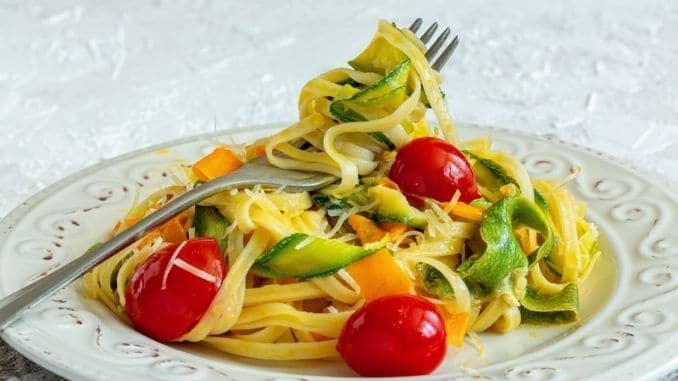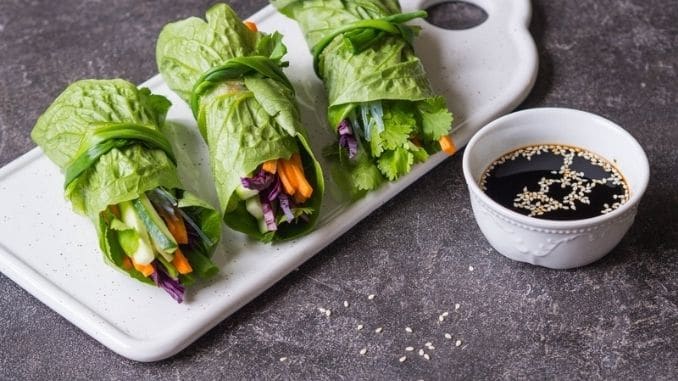
We all know that vegetables are among the healthiest foods we can incorporate into our diets. Veggies are rich in all sorts of nutrients, antioxidants, water, and fiber. Studies show that a diet rich in vegetables is linked to less risk for obesity and certain chronic diseases.
In 2005, author and educator Dan Buettner wrote an article in National Geographic magazine called “The Secrets of a Long Life.” In the article, he identified five world regions where people were living past 100 years. Buettner labeled these regions blue zones. Buettner found that most of these centenarians in the blue zones were not strict vegetarians, but that their diets were composed of mostly vegetables. Also, theses vegetable-loving, 100-plus-year-old people have avoided ailments like high blood pressure, heart disease, obesity, cancer, and diabetes.
In our fast-paced lives, it can be a challenge to get enough vegetables into our regular diets. Because we understand the struggle, we’ve created a list of 16 ways to eat more vegetables every day. We’re not suggesting you get sneaky and try to trick yourself into eating your greens by pureeing celery into your chocolate pudding. These are just good, honest suggestions for ways to get more vegetables into your diet every day.
1. Start With Breakfast
The best way to squeeze more vegetable servings into your regular diet is to start with your first meal. Eat avocado toast in the morning. Add organic chopped spinach and onions to your scrambled eggs. Serve sliced garden tomatoes alongside your morning meal. You can also chop up and roast bell peppers, potatoes, carrots, and garlic together for a type of hash. If you begin the day with vegetables on your plate, you’re already on the right path toward a more nutritious diet all day.
2. Swap Out Linguini for Zucchini
Handheld or automatic vegetable spiralizers turn your zucchini, butternut squash, carrots and yellow squash into vegetable noodles. You don’t have to boil the veggie noodles. Sauté them lightly in olive oil and toss them with marinara sauce, alfredo sauce or peanut sauce for an extremely healthy alternative to pasta.
3. Fill Half Your Plate With Veggies
Every time you eat, fill your plate ― at least halfway ― with vegetables. Then, add your starches and proteins. The more vegetables, the better. If you’ve got them, load your plate three-quarters full of veggies for even more concentrated nutrition.
American celebrity chef and restaurateur Bobby Flay also recommend this technique. Flay says, “Go vegetable-heavy. Reverse the psychology of your plate by making meat the side dish and vegetables the main course.”
4. Make Veggie-loaded Dips
If you’re feeling snacky, or you need to make a few hors d’oeuvres for guests, make some that are full of the healthiest foods on Earth. Choose a dip like homemade guacamole with avocados, onions, cilantro, tomatoes, peppers, and garlic. Alternatively, make homemade salsa with organic canned tomatoes, jalapenos, bell peppers, onions, and shallots. Hummus is also a great dip that you can blend with roasted peppers and garlic.
5. Use Leafy Green Herbs
Remember that green herbs also count in your daily vegetable servings. Use lots of fresh organic parsley, basil, mint, and cilantro in your dishes. Toss them into your pasta, add them to your sandwiches, mince the herbs and put them into marinades and dressings. You’ll give your food excellent flavor and all sorts of extra nutrients with delicious fresh herbs.
6. Eat a Big Salad Every Day
Another way to get a truckload of vegetables into your daily diet is to get into the habit of eating a fresh salad each day. Spring for organic leafy greens and add in other delicious vegetables like tomatoes, bell peppers, olives, carrots, red onions, celery, beets, and peas.
If you’re not into leafy salads, try making a broccoli or cabbage slaw. You can usually find it bagged in the produce section of the grocery store. Add halved grape tomatoes, diced cucumber, and olives to the mix. Dress it with olive oil and balsamic for a tasty, antioxidant-rich slaw.
7. Add Vegetables to Your Marinara and Pesto
Anytime you’re making pasta sauce from scratch or even heating store-bought marinara from a jar, add about a cup of chopped spinach to the sauce. Similarly, if you’re making pesto, blend in a couple of avocados with the basil and other ingredients to make it extra creamy and add more vegetables to your sauce.
8. Put Out a Tray of Washed Cut Vegetables an Hour Before Dinner
When everyone in the house is starving, and you’re still prepping dinner, lay out an array of washed and chopped vegetables with hummus for snacking. It’s an ideal way to make sure even the pickiest eaters get a few veggies in their bellies.
9. Embrace Cauliflower
Search online for cauliflower recipes, and you’ll find a slew of creative and delicious ways to use this versatile cruciferous vegetable. Try using cauliflower to make pizza crust or grate it to make cauliflower rice. You can also grill slices of a cauliflower head as you would a steak or make mashed potatoes with it. Cauliflower is a fantastic starch substitute, and it is delicious when seasoned and cooked well.
10. Put Vegetables in Your Smoothie
For some reason, I don’t enjoy eating celery. It’s something about the smell and texture, I think. However, I can drink my weight in green smoothies made with spinach, celery, green apples, and ice.
Experiment with vegetables in your morning smoothie. Spinach goes well with berry or chocolate smoothies. You can also usually add kale and other greens without changing the fruity flavors too much. Carrots are also great blended with other fruits and veggies.
11. Keep Veggies at Your Desk
Sometimes when I’m working, and I don’t want to take time out for a meal, I grab easy snacks like chips or energy bars to curb my appetite. However, I’ve found that when I proactively bring sliced cucumbers or baby carrots to my desk, I don’t even think of junk food. Snacking on healthy vegetables helps me to stay nourished better. I also feel so much better and more energized when I’m eating well.
Before you’re hungry, chop carrot sticks, slice cucumbers and wash some snap peas. Put these in a resealable container and bring them to work to keep in your desk drawer. When you’re feeling munchy, you’ve got two choices: stop working and run over to the vending machine for chips or open your desk drawer and eat some superfoods. Nine times out of 10, you’ll go for the convenience of the superfoods and skip the junk. Having vegetables at the ready is a great way to get more of them into your diet each day.
12. Load Your Pizza With Veggies
Do you enjoy pizza night at your house? If so, consider bypassing the pepperoni and loading your pie up with sweet onion slivers, sliced garlic, fresh chives, diced bell peppers and tomatoes, basil leaves and chopped broccoli. You’ll love the fantastic flavors these veggies add to your pizza.
If kids are involved, and they’re not super excited about all-veggie pizzas, let them add their usual toppings, but require them to add two portions of vegetables as well. My kids normally go for green olives and chopped spinach or diced tomatoes.
13. Incorporate Vegetables Into Casseroles
If you’re making pot pie, lasagna or tuna casserole, add in some extra vegetables. The recipe may call for some basic veggies, but you can always add extras like diced celery, peas, corn, chopped onions, and spinach. Get creative. Most vegetables taste good in casserole-type dishes.
14. Add Extra Veggies to Your Soup
Whether you’re making soup from scratch or a can, you can increase the nutrition immensely by adding a cup or two of fresh or frozen mixed vegetables to the pot. Keep a bag of organic mixed vegetables in the freezer. When you make any kind of soup, chili or stew, throw in those extra vegetables. This is a convenient way to give whatever you’re making the better flavor and extra nutrients.
15. Use Green Leaves as Sandwich Wraps
If you’re making tuna salad sandwiches or any type of wrap, use large kale leaves or romaine in place of bread. You can also replace tortillas with green leaves when you’re making tacos or burritos.
16. Bake a Sweet Potato or Pumpkin Pie
If you’re making a dessert, why not add vegetables? Whenever you’re asked to bring a dessert to dinner, or you want to celebrate, make a delicious sweet potato pie or a pumpkin pie. With most pie recipes, you can cut the sugar in half ― at least ― and use plant-based products like coconut milk instead of heavy cream. Use whole wheat pastry flour or another alternative instead of white flour as well. It may not be the healthiest thing you eat all day, but your dessert will count as an additional serving of vegetables.
Eat Your Vegetables
Research has shown that you can prevent obesity, certain types of cancer, heart disease and type 2 diabetes by replacing the unhealthy foods on your plate with colorful, tasty, nutrient-rich vegetables. You’ve got all the incentive in the world to incorporate several servings of vegetables to your daily diet.
For your guide to the best foods to heal and slim you body, check out The Best Foods that Rapidly Slim & Heal in 7 Days, here!







